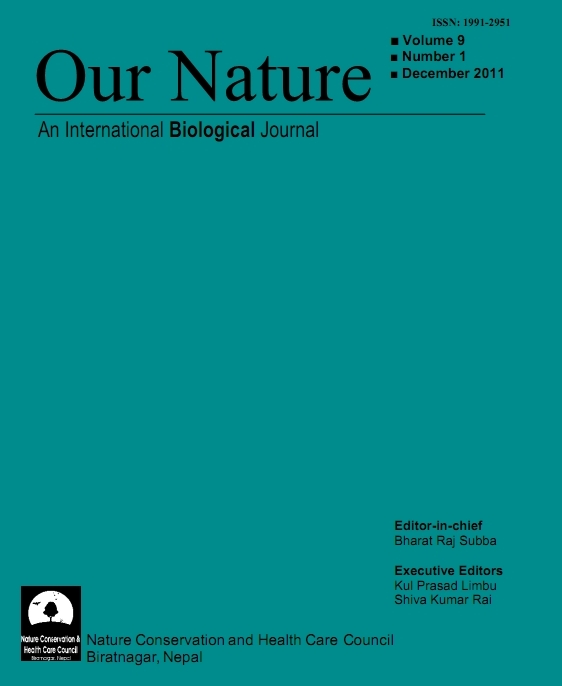Biomass and Net Primary Productivity in three different Aged Butea Forest Ecosystems in Western India, Rajasthan
DOI:
https://doi.org/10.3126/on.v9i1.5736Keywords:
Butea monosperma, biomass, forest floor biomass, litter fall, net primary productivity.Abstract
The study was conducted to estimate the biomass and net primary productivity of different age grouped (5, 10 and 15-year-old) Butea monosperma forest ecosystems in western India , Rajasthan (located between 23º49′ to 25º28′N latitudes and 73º0′ to 75º49′E longitudes) from June 2007 to May 2008. The vegetation biomass, forest floor biomass, tree litter fall and net primary productivity (NPP) of trees and shrubs were estimated and it was found that the tree biomass and net primary productivity increased with increasing age of the forest stand, whereas the herb biomass and net primary productivity decreased significantly (P<0.01) with increase in the forest age. The biomass of trees increased with age from 183.7±3.21 to 298.3±3.57 t ha-1 while shrub biomass ranged from 4.9±1.61 to 6.3±1.38 t ha-1 and the herb biomass fluctuated from 1.7±1.64 to 2.1±1.81. The tree layer NPP varied from 17.2 to 29.3 t ha-1 year-1 whereas the NPP of the shrub layer was 0.88 to 1.6 t ha-1 year-1. The productivity of the herb layer fluctuated from 2.3 to 3.1 t ha-1 year-1. All values of biomass and NPP of trees, shrubs and herbs were low in 5-year-old, moderate in 10-year-old and high in 15-year-old forest stands. The total forest biomass increased from 190.7 t ha-1 in the 5-year-old to 306.3 t ha-1 15-year-old forest and net primary productivity from 21.1 t ha-1 year-1 in the 5-year-old to 33.2 t ha-1 year-1 in the 15-year-old forest.
Downloads
Downloads
How to Cite
Issue
Section
License
This license enables reusers to distribute, remix, adapt, and build upon the material in any medium or format for noncommercial purposes only, and only so long as attribution is given to the creator.




